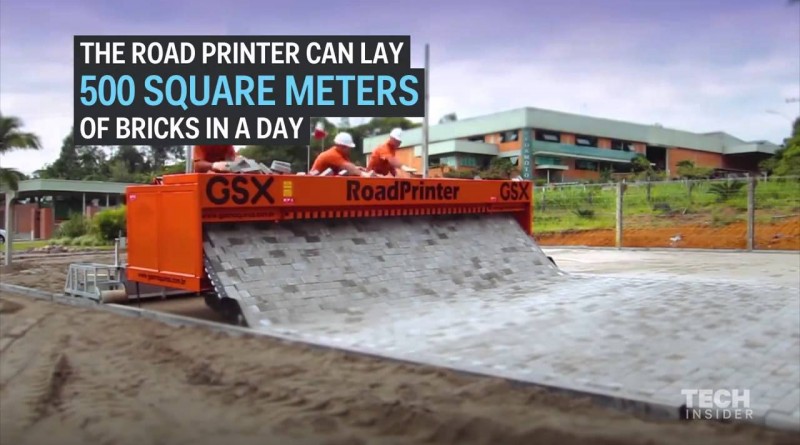Road Printer
It takes a long time to pave a road. On average, a worker can pave 100 square meters (1,100 ft2) per day in the traditional manner. Looking to shorten that process are road printers like the Tiger Stone paving machine, which can “print” 300 square meters (3,200 ft2) of cobblestone road in a day.
Another is RPS’s RoadPrinter, which can do 500 square meters (5,300 ft2) per day. One to three operators feed loose bricks into the machine. Then the pusher sorts the bricks into a pattern like a carpet. At that point, gravity takes over, and the machine lays down the brick road. Afterward, a steamroller presses the bricks into place.
The printers are electrically powered and don’t have many moving parts, which makes them easy to use and maintain. Also, they don’t make much noise, especially compared to traditional methods of paving roads.
Of course, the major difference between most roads and the machine-printed ones is that the machines lay down brick instead of asphalt. However, brick roads are also better than asphalt because they filter water, expand when they are frozen, and last longer.
ROBERT GRIMMINCK









